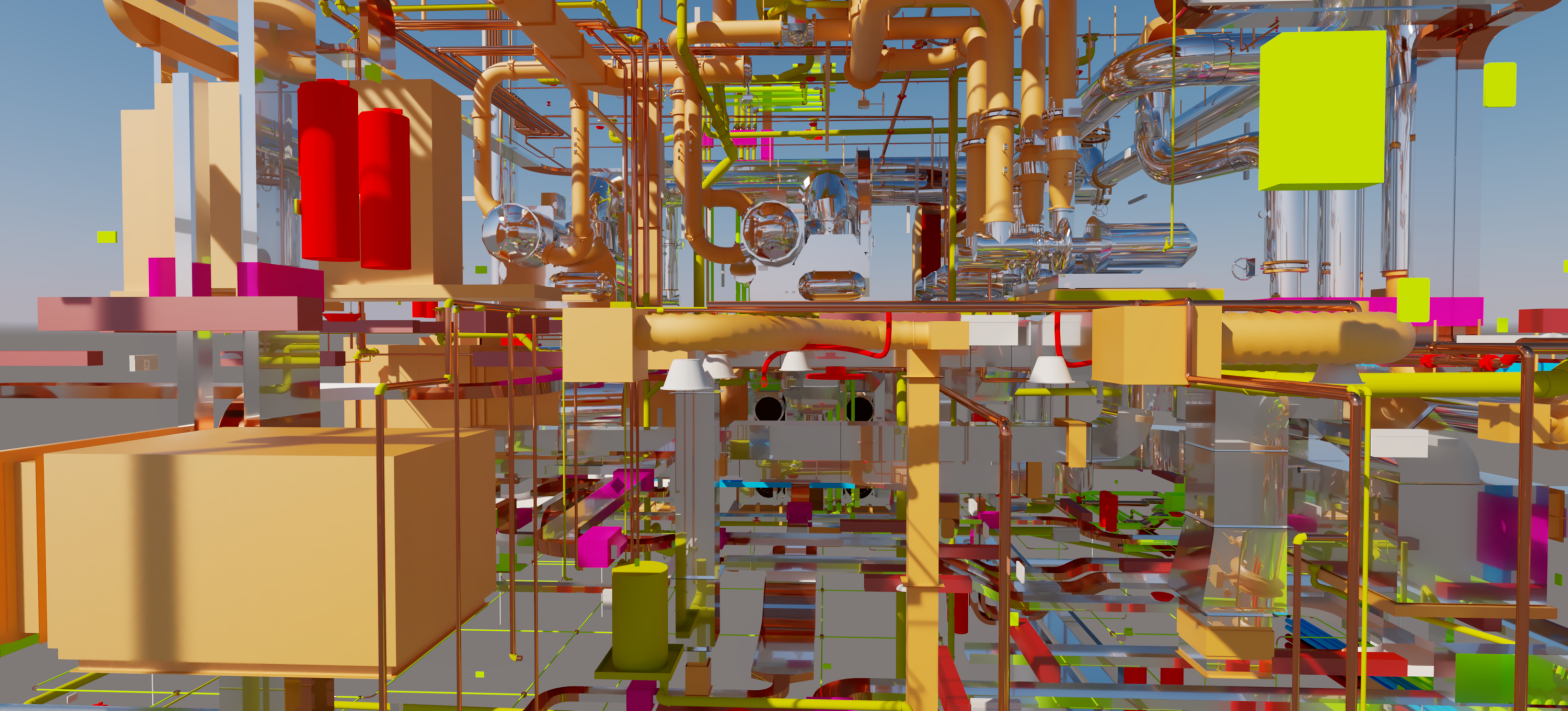
In today’s rapidly evolving construction industry, the adoption of cutting-edge technologies has become imperative for staying competitive and ensuring project success. One such technology that has revolutionized the way construction projects are planned, designed, and executed is 3D Building Services Intelligent Models. These models, often referred to as Building Information Models (BIM), have become an integral part of modern construction projects, offering a myriad of benefits that enhance efficiency, accuracy, and collaboration throughout the project lifecycle.
What Are 3D Building Services Intelligent Models?
3D Building Services Intelligent Models, or BIM, are digital representations of a building’s physical and functional characteristics. Unlike traditional 2D drawings and blueprints, BIM encompasses the entire building process in a comprehensive 3D model. This model includes not only the architectural elements but also the mechanical, electrical, plumbing (MEP) systems, and other essential building components. It is a dynamic and intelligent tool that stores a vast amount of data, enabling stakeholders to make informed decisions and streamline processes.
Benefits to the Construction Project:
1. Enhanced Collaboration and Communication:
One of the primary benefits of using 3D Building Services Intelligent Models is the improvement in collaboration and communication among project stakeholders. With all project information centralized in a single digital model, architects, engineers, contractors, and subcontractors can easily share and access data. This fosters a more cohesive and transparent workflow, reducing the risk of misunderstandings and errors that often plague construction projects.
2. Improved Visualization and Design:
BIM allows project teams to create highly detailed 3D visualizations of the building, making it easier to understand the design intent. This not only aids in identifying design flaws or clashes early in the planning stages but also enables clients to visualize the end product better. Architects and designers can explore different design options and test their feasibility before construction begins, leading to more innovative and efficient designs.
3. Clash Detection and Conflict Resolution:
Intelligent models enable automated clash detection between various building systems, such as MEP and structural components. Identifying clashes before construction starts reduces costly rework and delays. BIM allows for quick conflict resolution, as stakeholders can collaborate to find solutions in the digital environment, saving time and resources in the field.
4. Accurate Cost Estimation:
3D Building Services Intelligent Models provide a robust foundation for accurate cost estimation. Contractors can extract quantities directly from the model, which eliminates manual take-offs and reduces the risk of errors. This accuracy in estimating materials and labor costs helps project owners make informed financial decisions and ensures that projects stay within budget.
5. Enhanced Construction Planning and Scheduling:
BIM models enable detailed construction sequencing and scheduling. Contractors can create 4D models that include the element of time, allowing for better project management and resource allocation. This results in improved project timelines and reduced delays, ultimately leading to on-time project completion.
6. Facilities Management:
3D Building Services Intelligent Models continue to provide value even after construction is complete. They serve as a valuable resource for facility management and maintenance. Building owners can access detailed information about every component of the structure, making it easier to plan maintenance, renovations, and upgrades over the building’s lifecycle.
3D Building Services Intelligent Models have become an indispensable tool in the construction industry, offering a multitude of benefits that positively impact project outcomes. From enhanced collaboration and design visualization to improved cost estimation and sustainability, the adoption of BIM technology has the potential to transform construction projects, making them more efficient, cost-effective, and sustainable. As the construction industry continues to evolve, embracing intelligent models is not just an option but a necessity for those aiming to thrive in this dynamic landscape.
Draftech – Your Project, Our Expertise
Testimonials
Very professional and efficient organization. Delivered a great product to a tight deadline.
ACE Power
Karl and the team are very professional and have a vast knowledge of BIM coordination.
Dwayne Willaims Babinda Electrics
We had multiple large projects with tight deadlines and needed a company we could trust. The teams delivery, attention to detail and understanding of what is being designed is always executed to a high standard.
Martin O’Donovan Envar Engineers
Draftech offered a flexible and reliable approach to working collaboratively with our team. They met our expectations and quality requirements and also offered up new ideas.
Draftech have proven to be a valuable and trustworthy resource and we will continue to work with Draftech on other projects.
Simon Marsden Umow Lai
Draftech is different from others in the professionalism and features they provide.
The ability to walk through projects in real time online provides invaluable insight into problem areas and helps provide an efficient resolution on the spot without many phone calls, emails and the necessity for us to paw through countless drawings to understand the issues.
Todd Morris Manager - Air mech
Draftech were put forward to FIP Electrical as the solution to Coordinate, Model, carry out clash detection, provide Electrical Services Shop Drawings, as built documentation and completed electrical model.
Simon Thorpe FIP Electrical
In close collaboration Draftech set up all our systems and model deliverables. In this process Draftech have proven to be a valuable resource for us and demonstrated commitment, understanding and professionalism.
David Skelley DJCoalition
Draftech’s attention to detail and proactive nature throughout the project assisted us in identifying issues before becoming evident on site, saving us both time and unexpected costs.
Matt Payne PJM Engineering Services
They delivered very high quality Revit models and associated 2D documentation at key milestones, working to a tight budget and in strict accordance with the Architects’ BIM requirements.
Peter Thomas Geoff Hesford
We found Draftech’s work to be of high standard and the team delivered exactly as agreed, in fact, when we considered the project complete, Draftech put further resources into the project as they were not satisfied.
John Johnson Beca
Engaging Draftech during design gave us the tools to make smart decisions.
Hansen Yuncken Design Manager - Michael Harkins
The drafting service is timely, reliable and fit for purpose for the built environment.
Peter Harvey Harvey Industries
Draftech stands apart from other drafting services that we have previously used in their attention to detail and ability to adapt to the individual client’s requirements.
Doug Holt McCaig Aircon
I can confidently recommend Draftech as a solid and reliable supplier, and experts in their field. I look forward to working with them again in the near future.
Chris Behan Norman Disney & Young
After seeing the benefits Draftech provided us on the Townsville Hospital Redevelopment we have set up a relationship with Draftech and intend to continue to use their BIM knowledge and skills for our future projects.
Brad Lund Energy Power Systems
Draftech has no competition as they are in a class of their own.
John Boyes Babinda Electrics
Draftech Developments Drafting and Design Capabilities, in conjunction with their outstanding level of Client service and support has provided great solutions to our engineering and Drafting Design portions within our Gorgon Barrow Island Project.
Aaron Hazelton Applied Electro Systems Pty Ltd
Draftech set up necessary systems and workflows very quickly, but also setup auditable estimating and weekly cost tracking processes that we utilised, requiring little maintenance.
TOM PURDON MPM GROUP




























